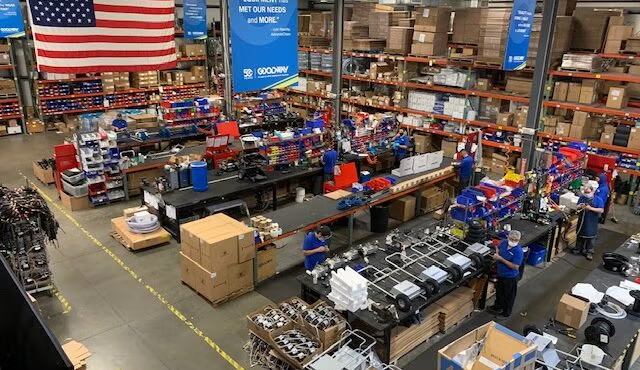5 Tips To Keeping Manufacturing Employees Safe From COVID-19
In March 2020, the United States began a series of state shutdowns to help curb the spread of COVID-19. Now, in this state of uncertainty, we may not know what the future will hold but we do know that things in the manufacturing workplace will demand change now.
Masks in public have become more commonplace – and in some establishments, even required. Social groups have gotten smaller as social distancing has also become more normalized. Many companies have embraced working from home to protect employees.
For those who can’t work from home – like manufacturing employees and other essential workers – there are countless new safety precautions.
As this global health crisis continues, safety on the manufacturing floor has changed from more than the usual safety glasses and glove PPE to more advanced training and protection. So, how can manufacturers keep their employees safe on the floor? Here are a few essential tips and tools to help you.
Mask Wearing
While epidemiologists and health experts are still learning new things about COVID-19, there is one thing they know for sure: it is highly contagious and spreads via airborne droplets.
When an infected person coughs, sneezes, or even speaks, virus-containing droplets travel into the air where it can infect others. This is why the CDC recommends that all individuals wear masks when near one another.
Masks work by preventing infected people from infecting others as they go about their daily work activities. It is estimated that 20% of infected individuals are asymptomatic (show no symptoms), and this is a straightforward precaution you and your employees can’t afford to skip.
Space Employees Six Feet Apart
In addition to mask-wearing, creating separation between people is an essential part of reducing viral transfer risk. Standing six feet apart has been the direction of health experts since the COVID-19 first entered the country.
This is one precaution that’s free, easy to do, and critical if you want to keep employees safe. However, it is important to understand this can have impacts on your production floor layout or flow and so some planning and training will be required.
Keeping employees safe on the manufacturing floor will require various safety solutions, often used in tandem. This will require ongoing training and observation to ensure “old” habits don’t creep back into workplaces.
Limit Social Exposure with Staggered Shifts
As mentioned, creating additional space in your production areas may sauce unique space challenges. After all, you only have so much space in your facility, and your pre-COVID workforce wasn’t designed to have that much distance between them. The CDC has a recommendation: stagger your employee’s shifts.
Staggered shifts are a great way to mitigate the risk of transmission in a busy manufacturing facility. This system guarantees that fewer people will be in the building at any given time, making social distancing much easier.
Staggering shifts can also help relieve congestion in high-traffic areas such as entrances, exits, break rooms, and time clocks. Limiting the time workers spend huddled in groups, waiting to punch in or get some coffee, will also limit the chances of an outbreak at your facility.
While staggered shifts can cause business disruptions and increased costs in the short term, it can help reduce the risk of large scale labor shortages later.
Protect Each Other with Plexiglass Barriers
In the world of manufacturing, it’s common for workers to spend all day in one spot, focusing on one task or project. This is an excellent opportunity to introduce another form of transmission protection: plexiglass barriers.
The CDC states that plexiglass barriers (or barriers of any other impermeable material) between workers can be an effective way for manufacturing companies to keep their employees safe on the job. Of course, plexiglass barriers are not a perfect solution – if workers step out from behind the barriers, they can be exposed to the virus. Physical barriers can slow down the assembly process for some manufacturers.
If your company can safely install plexiglass barriers between workers (without affecting your work overall), it is a wise step for preventing the spread of COVID-19. However, like all the other precautions listed here, they work best in conjunction with other safety measures. Make sure workers social distance and wear masks – even behind the glass!
Adopt Proper Sanitation and Disinfection Techniques
Finally, an important and effective way to prevent the spread of COVID-19 in your facility: keep your space cleaned and sanitized!
Regular deep cleaning and disinfecting of industrial shared surfaces, and air ducts in any work building is the proven method to reduce the risk of viral transmission in your facility and between your employees.
Sanitation, disinfection, and proper ventilation have always been important on the manufacturing floor, but it is even more critical now. The EPA claims that indoor spaces are riskier than outdoor ones for the spread of COVID-19, as a lack of proper ventilation can keep the virus locked in with people. Therefore, it is vital to keep your HVAC system clean and in working order to keep your workers safe and healthy.


